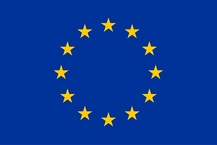Informationstechnik - Sicherheitsverfahren - Verschlüsselungsalgorithmen - Teil 2: Asymmetrische Chiffren Information technology - Security techniques - Encryption algorithms - Part 2: Asymmetric ciphers
Informationstechnik - Sicherheitsverfahren - Verschlüsselungsalgorithmen - Teil 2: Asymmetrische ChiffrenInformation technology - Security techniques - Encryption algorithms - Part 2: Asymmetric ciphers |
| Shortname | ISO/IEC 18033-2:2006-05 |
|---|---|
| Dokumentnummer | 18033-2 |
| Ausgabedatum | 2006-05-00 |
| Erwerb bei | https://www.vde-verlag.de/iec-normen/213871/iso-iec-18033-2-2006.html |
| Internationales Gremium | ISO/IEC JTC 1/SC 27 |
| Thema | Algorithmen , Sicherheitsverfahren , Verschlüsselung |
| Sektor | Informationstechnik und Telekommunikation |
| Branche | Informationstechnik |
| Level of Abstraction | 1 |
- Einführungsbeitrag (short) EN:
ISO/IEC 18033-2:2006 specifies encryption systems (ciphers) for the purpose of data confidentiality. The primary purpose of encryption (or encipherment) techniques is to protect the confidentiality of stored or transmitted data. An encryption algorithm is applied to data (often called plaintext or cleartext) to yield encrypted data (or ciphertext); this process is known as encryption. The encryption algorithm should be designed so that the ciphertext yields no information about the plaintext except, perhaps, its length. Associated with every encryption algorithm is a corresponding decryption algorithm, which transforms ciphertext back into its original plaintext. An asymmetric, i.e. public-key, encryption scheme allows a sender to use a recipient's public key to transmit an encryption of a message to the receiver, who can use his secret key to decrypt the given ciphertext, thereby obtaining the original message. Such a scheme should be secure in the sense that no information about the message should be leaked to a (resource-bounded) attacker, even if that attacker mounts a so-called 'chosen ciphertext' attack, in which he may obtain decryptions of other ciphertexts. This is the strongest type of attack that has been proposed for a public-key encryption scheme. ISO/IEC 18033-2:2006 specifies the functional interface of such a scheme, and in addition specifies a number of particular schemes that appear to be secure against chosen ciphertext attack. The different schemes offer different trade-offs between security properties and efficiency.
- Anmerkung:
Geändert durch ISO/IEC 18033-2 AMD 1 (2017-11)
- ISO/IEC 10118-2 (2000-12)
- ISO/IEC 10118-3 (2004-03)
- ISO/IEC 18033-3 (2005-07)
- ISO/IEC 9797-1 (1999-12)
- ISO/IEC 9797-2 (2002-06)
-

Transnational Branche: Informationstechnik
Ergebnis 66RICHTLINIE (EU) 2022/2557 DES EUROPÄISCHEN PARLAMENTS UND DES RATES vom 14. Dezember 2022 über die Resilienz kritischer Einrichtungen und zur Aufhebung der Richtlinie 2008/114/EG des RatesRL (EU) 2022/2557
Einzelne Vorschriften
Alle

Transnational Branche: Informationstechnik
Ergebnis 67DELEGIERTE VERORDNUNG (EU) 2022/30 DER KOMMISSION vom 29. Oktober 2021 zur Ergänzung der Richtlinie 2014/53/EU des Europäischen Parlaments und des Rates im Hinblick auf die Anwendung der grundlegenden Anforderungen, auf die in Artikel 3 Absatz 3 Buchstaben d, e und f der Richtlinie Bezug genommen wirdVO (EU) 2022/30
Einzelne Vorschriften
Alle

Transnational Branche: Informationstechnik
Ergebnis 68Verordnung (EU) 2022/1925 des Europäischen Parlaments und des Rates vom 14. September 2022 über bestreitbare und faire Märkte im digitalen Sektor und zur Änderung der Richtlinien (EU) 2019/1937 und (EU) 2020/1828 (Gesetz über digitale Märkte)VO (EU) 2022/1925
Einzelne Vorschriften
Art. 7 III, IV, VI, IX; 8 I

Transnational Branche: Informationstechnik
Ergebnis 69Verordnung (EU) 2022/2065 des Europäischen Parlaments und des Rates vom 19. Oktober 2022 über einen Binnenmarkt für digitale Dienste und zur Änderung der Richtlinie 2000/31/EG (Gesetz über digitale Dienste)VO (EU) 2022/2065
Einzelne Vorschriften
Art. 22 I; 28 I; 40 II, V lit. b; VIII lit. d, XIII; 42 V
